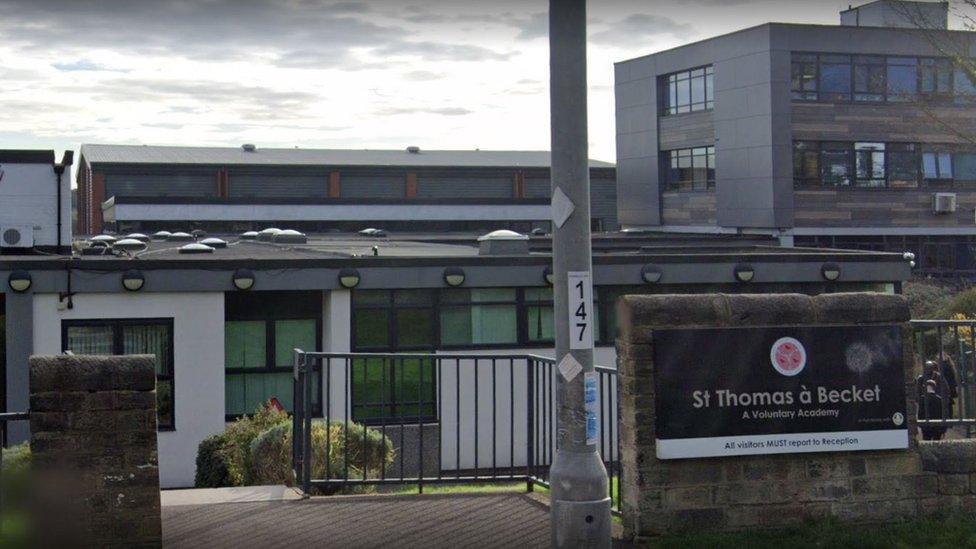Schools concrete crisis: Wakefield's St Thomas à Becket closed after Raac found
- Published

Reinforced autoclaved aerated concrete (Raac) was detected in one of the buildings at St Thomas à Becket Catholic Secondary School
A secondary school in Wakefield has been forced to close after crumbling concrete was found on site.
Reinforced autoclaved aerated concrete (Raac) was detected in a building at St Thomas à Becket School after a survey.
The school was closed on Thursday and will open only to pupils in Year 11 from Wednesday 1 November after half-term. Other teaching will be online.
A union said it was "really concerning" that potentially dangerous concrete had "only just been identified".
However, the academy is not on the official list of schools, external confirmed as having Raac, which is issued by the Department for Education (DfE).
More than 200 schools in England have so far been identified as having education facilities built with the material, often used in flat roofing, floors and walls.
Bishop Konstant Catholic Academy Trust, which runs the school, said it would keep parents and staff "informed of the changes that are being put in place".
'Minimise disruption'
A spokesperson said the secondary school would only open to Year 11 pupils when the new term began on 1 November.
"Teaching and work for all other students will be provided online, as staff are currently planning how to use the spaces available", they said.
In a statement, Mrs Lesley Fitton, chief executive of the trust, said: "The safety of our pupils and staff is of paramount importance and work is under way to mitigate the risks and minimise disruption to children's education.
"The Academy Trust and school leadership team have been working closely with the Diocese of Leeds, and have engaged a specialist Raac structural engineer to inspect the building and will implement whatever remedial measures are required.
"The Trust will ensure all DfE guidance is being followed correctly."
Watch: How RAAC concrete can crumble under pressure
Rianne Hooley, Unison's regional organiser, said: "It's really concerning that this dangerous concrete has only just been identified in the school, so long after the issue has been in the spotlight and this far into the autumn term.
"It means that since September the pupils and staff have been learning and working in a potentially dangerous building."
She asked the trust to explain "the extent of the problem, the estimated costs of addressing the issue and how long remote learning is to be in place".
Raac is a lightweight material that was used mostly in flat roofing, but also in floors and walls, between the 1950s and 1990s. It is a cheaper alternative to standard concrete and has a lifespan of about 30 years.
In June, the National Audit Office reported that years of insufficient funding had increased the risk of a building collapse.

Follow BBC Yorkshire on Facebook, external, X (formerly Twitter), external and Instagram, external. Send your story ideas to yorkslincs.news@bbc.co.uk, external.
Related topics
- Published13 February 2024

- Published19 September 2023
